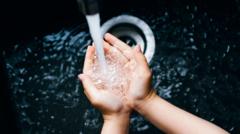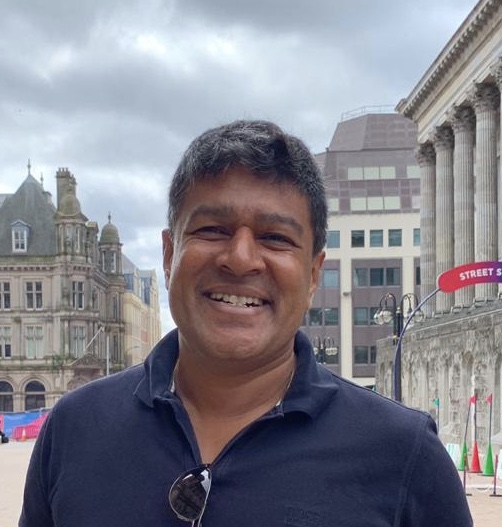Fighting the Nanoplastics
Most people are familiar with the scourge of microplastics pollution – the microscopic pieces of plastic debris that are pervasive in our oceans, waterways, and even remote parts of the planet. But an even smaller and more insidious form of plastic pollution is gaining attention from scientists – nanoplastics. These particles, measuring one millionth of a meter or smaller, pose their own environmental and health risks that are just beginning to be uncovered.
A team of researchers in the Czech Republic has developed new tools to not only detect nanoplastics in water samples but also remove them. Led by Dr. Martin Pumera of Brno University of Technology, the group presented their findings in a recent research paper published in ACS Nanoscience. Their work shows promise for improving our understanding and remediation of nanoplastics contamination in the environment.
What are nanoplastics? Like microplastics, nanoplastics are tiny fragments of plastic debris that break off from larger plastic items through environmental degradation and wear-and-tear processes. Common sources include microfibers shed from synthetic fabrics during washing, plastic packaging, and tires wearing down on roadways.
But at the nanoscale, plastic particles take on new chemical and physical properties compared to larger pieces. Their extremely small size means nanoplastics can more easily penetrate biological tissues and cells. There is also evidence they may act as a vector to transport other toxic contaminants. While microplastics have received more attention to date, the potential hazards of nanoplastics demand focused research given the likelihood they are present wherever microplastics have been found.
Detecting nanoplastics is particularly challenging due to their minuscule size, on the order of 100 nanometers or less. Existing techniques for identifying microplastics such as microscopy and spectroscopy often cannot distinguish or quantify nanoplastics. Pumera’s group addressed this problem by developing a fluorescent labeling method coupled with photoluminescence spectroscopy.
In their experiments, the researchers stained sample nanoplastics with the hydrophobic dye Nile Red, which selectively binds to plastic polymers. Exciting the dyed nanoplastics with a specific wavelength of light caused them to emit characteristic fluorescence that could be measured with a spectrofluorometer. Through a calibration process, they were able to correlate the strength of the fluorescence signal to the concentration of nanoplastics in solution – allowing for the first time an easy way to quantify nanoplastics down to concentrations of 108 particles per milliliter of water.
“This staining and fluorescence detection technique provides a simple, fast alternative to more complex and expensive methods like mass spectrometry for analyzing nanoplastics,” explains Pumera. “It could find widespread application in environmental labs seeking to monitor and study this emerging contaminant.”
Having developed a method to detect nanoplastics, the researchers then turned their attention to removing them from water samples. For this task, they employed “nanorobots” – tiny magnetic particles made of iron oxide just 180 nanometers in size. When a rotating magnetic field was applied, these nanorobots were able to actively swarm and collide with nanoplastics in solution, trapping them on their surfaces through electrostatic interactions.
The nanorobots could then be removed from the water along with any captured nanoplastics using a stronger external magnet. Pumera’s group found their magnetic nanoagents were capable of sequestering over 90% of nanoplastics from spiked water samples within just two hours of treatment.
“Removal is a critical part of the solution for nanoplastics pollution, and our nanorobots provide an efficient way to extract them from the environment,” notes Pumera. “By integrating detection and cleanup tools, we aim to give researchers and regulators better methods for studying nanoplastics and developing remediation strategies.”
While microplastics have garnered significant attention in recent years, nanoplastics represent an emerging frontier that requires more exploration. With their disruptive staining and nanorobotics techniques, Pumera’s team has taken an important step towards enabling that crucial research. Their dual approach of sensitive detection coupled with effective extraction represents a major advance over previous piecemeal efforts.
If successfully scaled and implemented, it could revolutionize our ability to monitor nanoplastics pollution worldwide and to mitigate their accumulation and spread. Further optimization work will focus on expanding the method to various plastic polymer types and tailoring fluorescent dyes for optimal visualization across different particle sizes and compositions.
The prospect of plastics infiltrating the environment all the way down to the nanoscale triggers serious concern, given scientific evidence that smaller particles may pose proportionally higher biological risks. Having newly empowered ourselves to observe and purify water of nanoplastics contamination, we take a critical step towards understanding – and hopefully alleviating – their still murky threats to ecosystems and public health. Tiny in size but potentially huge in impact, nanoplastics pollution demands our growing attention and remedial action.
Reference(s)
Click TAGS to see related articles :
ENVIROMENT | MICROPLASTICS | NANOPLASTICS | POLLUTION | RESEARCH
- Cow astonishes scientists with rare use of toolson January, 2026 at 2:54 pm
- Water companies to face regular MOT-style checks...on January, 2026 at 9:43 am
- Hidden cameras reveal what hedgehogs really get...on January, 2026 at 1:34 am
- Council commits to demolition costs on eroding...on January, 2026 at 6:06 pm








